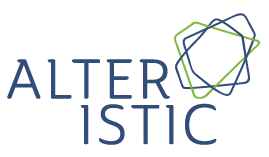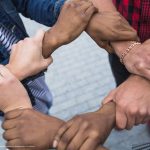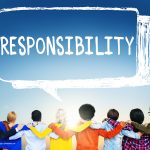What does it mean to be accessible?
“The one argument for accessibility that doesn’t get made nearly often enough is how extraordinarily better it makes some people’s lives. How many opportunities do we have to dramatically improve people’s lives just by doing our job a little better?”
― Steve Krug
et me start off by saying, I am certainly not an expert in accessibility and universal design. Sure, I can throw out some buzz words and make it seem like I’ve got years of experience researching and applying my knowledge to make our world a more accessible place; but truth is, although I do try my hardest, it’s not my expertise. That being said, I myself, have a disability and I am an expert in my own experience and I have been a passionate accessibility advocate for years. Because of that, I am always striving to think about how we can – and should – apply an accessibility lens to our prevention work, making sure that everyone is included in our efforts.
According to the United States Census Bureau, 20% of the population has a disability.1Like many of these folks, I was not born with one but developed a disability later in life. When I was first diagnosed, I was so worried about people treating me differently – so worried, in fact, that I didn’t tell many people for a long time (I’m over that now but I know not everyone feels the same way). We as a society lack an overall understanding around disabilities and what it means for people in their personal and professional lives; because my disability wasn’t visible, I was able to hide it for a long time and not have to be open about those challenges.
But why was I feeling that way? Why do we feel like we can’t share our challenges and our needs? In part, I assume, it’s because we live in a world that wasn’t created for people with disabilities. Our systems and structures were created for able-bodied and neurotypical people and those systems and structures then require reasonable accommodations for people if they don’t “fit the mold”. But what if all accommodations were reasonable, which means they’re inclusive from the start? What if no one had to out themselves about the fact that they need an accommodation? What if we never had to ask on a registration form if someone is hearing impaired, needed space for an assistive mobility device, or materials that were printed with visual impairments in mind? What if we made sure that any building or classroom that we were hosting an event was accessible to everyone? What if we, as a field, thought about what it truly means to invite people to consider their role in prevention and ensure that, if we are inviting everyone, they’re truly able to show up and be a part of our efforts?
There is a really great TED Talk called ‘When we design for disability, we all benefit’given by Elise Roy at TEDxMidAtlantic in September 2015.2It’s a quick 13-minute video and, in it, Elise talks about Design Thinking and she mentions the following steps:
- Define the problem (understanding the constraints)
- Empathize (observing people in real life situations and empathizing)
- Ideation (throw out hundreds of ideas – the more and wilder the better)
- Prototype & test (gathering whatever you can find to mimic your solution to test and refine)
- Sustainability (implementation – ensuring your prototype is sustainable)
What I love most is she talks about how “design thinking encourages people to fail and to fail often because eventually you’ll succeed. Very few great innovations in this world came from someone succeeding in the first try.” I think we are so afraid of failure in this area that it limits us in our ability to make things better!
It’s important that we brainstorm some issues that have come up in our branding, campaigns, programming, and trainings – those issues that have limited who is invited to participate – which will help us to better understand our missteps (Step 1: Define the Problem). Take some time to work with your colleagues and make notes in the trainings you’re doing about any challenges that come up related to access (Step 2: Empathize). Next, brainstorm as many ideas as possible to think about how we do our work better in light of the challenges you’ve identified – think big and boldly (Step 3: Ideation).Collaborate with the experts and gather resources on accessibility and inclusion and include anything that might be useful as you think through this process as a team – I’ve included some below to get you started (Step 4: Prototype and Test). And just like in our prevention efforts, make sure that what you’re doing is sustainable (Step 5: Sustainability).
It is a guarantee that we can’t cover all we need to know about accessibility in a single blog post of 500 words or less (I’m already way over that limit) so I consider this a starter blog. I want to continue to dive into the topic and think about the 5 steps I mentioned above and how we can continue to strengthen the work we do. This post is to get our brains churning and we will follow up with future posts about really thinking through the various ways that we can be inclusive of folks with disabilities in our work.
In the meantime, here are a few things you can start doing today:
- Let’s give folks with disabilities the autonomy to own how they identify. Consider starting with people-first language when talking to or about people with disabilities and let folks decide what language they want to use to describe themselves. Some people embrace their identity as someone who is disabled and some folks don’t want their disabilities to define them. It’s truly personal preference.
- Let’s make people with disabilities visible in our language, in our visuals, and in our spaces. Inclusion is key.
- Let’s educate ourselves as much as we can – it’s amazing how much more aware we are of our own missteps if we take the time to listen and learn.
- Let’s start with the basics and truly do some assessments on our current programming – focus group with folks, look to the resources in your community, take a second look at the way things have been done and start to think about how we can make them better!
Not all disabilities are visible but we need to ensure that people with disabilities are not invisible. As Steve Krug said, “How many opportunities do we have to dramatically improve people’s lives just by doing our job a little better?”
Resources:
2 ‘When we design for disability, we all benefit’ – Elise Roy – TEDxMidAtlantic – Sept. 2015
3Not on the Radar: Sexual Assault of College Students with Disabilities






